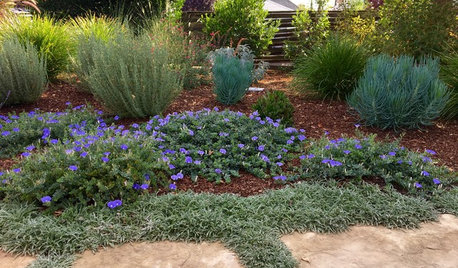Soil Test Results - Help with soil management plan
Slate
6 years ago
Related Stories

GARDENING GUIDESGardening Solutions for Heavy Clay Soils
What’s a gardener to do with soil that’s easily compacted and has poor drainage? Find out here
Full Story
GARDENING GUIDESWhat to Do This Fall to Build Healthy Garden Soil
Take advantage of the cool season to improve soil texture and replenish nutrients
Full Story
GARDENING GUIDESGrow a Beautiful Garden in Alkaline Soil
Got alkaline soil? Learn how to manage it and the many beautiful plants that will thrive in this ‘sweet’ soil
Full Story
GARDENING GUIDESHave Acidic Soil in Your Yard? Learn to Love Gardening Anyway
Look to acid-loving plants, like conifers and rhododendrons, to help your low-pH garden thrive
Full Story
GARDENING GUIDESHow to Stop Worrying and Start Loving Clay Soil
Clay has many more benefits than you might imagine
Full Story
GARDENING GUIDESGardening Solutions for Dry, Sandy Soils
Has your desert or beachy site withered your gardening creativity? Try these ideas for a beautiful, easy-care landscape
Full Story
FARM YOUR YARDHow to Get Good Soil for Your Edible Garden
The nutrients in your soil feed the plants that feed you. Here are tips on getting it right — just in time for planting season
Full Story
GARDENING GUIDES10 Solutions for Soggy Soil
If a too-wet garden is raining on your parade, try these water-loving plants and other ideas for handling all of that H2O
Full Story
GARDENING GUIDESGet the Dirt on Your Garden’s Soil
Understand how your soil supports your plants so you can ensure your garden’s success
Full Story
GARDENING GUIDESThe Poop Scoop: Enrich Your Soil With Good Old Manure
Get over the ick factor already — this natural super-ingredient for soil has so many benefits, you'll wonder why you ever went chemical
Full StoryMore Discussions








beckyinrichmond
beckyinrichmond
Related Professionals
Cottonwood Landscape Architects & Landscape Designers · Roosevelt Landscape Architects & Landscape Designers · Garden City Landscape Architects & Landscape Designers · Clark Landscape Contractors · Fruit Heights Landscape Contractors · Miller Place Landscape Contractors · New Providence Landscape Contractors · Norristown Landscape Contractors · Saint Paul Landscape Contractors · Salem Landscape Contractors · Santa Maria Landscape Contractors · Sugar Hill Landscape Contractors · West Covina Landscape Contractors · Mount Pleasant Swimming Pool Builders · Sunny Isles Beach Swimming Pool BuildersSlateOriginal Author
SlateOriginal Author
beckyinrichmond